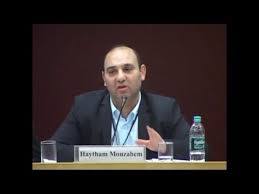“Preventing the emergence of a Kurdish entity in northeastern Syria relieves Ankara on the one hand, and [allows] Syria to regain its sovereignty over this region on the other”
The SDF can return under umbrella of Syrian sovereignty, the government of President Bashar al-Assad.

Dr. Haytham Mouzahem, head of Beirut Centre for Middle East Studies talks to International Affairs Review on the current situation in Syria and the Turkish military operations and the implications for the region.
Please walk us through what is happening right now in north east Syria.
Turkey has been invading areas of northeastern Syria controlled by the Kurds or the Western-backed Syrian Democratic Forces (SDF) to create a so-called “safe or buffer zone” under the pretext of preventing the Kurdistan Workers’ Party (PKK)-allied Kurdish forces from threatening Turkey’s internal security. Turkey and the West regard the PKK, which has been demanding the secession of Turkey’s Kurdish-majority region, as a terrorist organization. The Kurdish-dominated areas in northern and eastern Syria were protected by US troops, who withdrew on a surprise decision by US President Donald Trump.
is the YPG? What is the SDF defending? Is the region not part of Syria?
The YPG is a military militia affiliated to Saleh Moslem’s Kurdish Democratic Union Party (PYD), the Syrian branch of the Kurdistan Workers’ Party (PKK). Syria’s democratic forces are the same as the YPG, but they also include Arab tribal fighters in northern and eastern Syria. Of course the region is currently and historically a part of Syria, neither Turkey nor the Kurds claim otherwise, but the Kurds are working to achieve autonomy in the region and have since the beginning of the war established a self-managed area under their control and the exit of the Syrian government forces from most of it.
Why did the US decide to withdraw forces from Syria right now?
Before his election, [US President] Donald Trump promised to withdraw US troops from most combat zones, especially in the Middle East, particularly from Iraq, Syria, and Afghanistan. He is trying to deliver on that promise on the eve of the 2020 presidential campaign. He had ordered the withdrawal of US troops in May 2019, but the Pentagon opposed it and Trump was persuaded by his generals and Israel to stay in eastern Syria to prevent the expansion of Iranian influence in Syria, and to prevent ground passage from Iran to Syria through Iraq, especially from eastern Syria, near the Iraqi border. Today, when Turkish President Recep Tayyip Erdogan pressed for intervention to create a security zone and keep Kurdish forces away from Turkey’s borders, Trump chose to withdraw and not clash with Turkish forces.
Why is Turkey attacking the SDF? What goals is Turkey pursuing there?
Turkey considers the SDF a terrorist organization belonging to the PKK that poses a threat to its security, borders, and stability. It wants to remove it from its borders by a depth of 32 kilometers, as well as weaken it militarily and politically, and open [it for] the Syrian government to return to some of these areas in tacit agreement with Russia and Iran. Turkey also says it wants to establish a safe area of 444 kilometers and 32 kilometers deep so that Syrian refugees residing in Turkey can be moved there.
What is the response Syrian government is seeking? How does it view development?
The Syrian government publicly condemned the Turkish invasion and, in agreement with the Kurds, brought the Syrian army into a number of areas under the control of the SDF, such as Manbij and Ain al-Arab (Kobani), by implicit Turkish-Russian-Iranian agreement and American consent. Preventing the emergence of a Kurdish entity in northeastern Syria, this relieves Ankara on the one hand, and [allows] Syria to regain its sovereignty over this region on the other.
What has Iran’s response to the Turkish onslaught been?
Iran supports the position of the Syrian government and [has] publicly rejected the Turkish intervention but implicitly accepts this intervention as a prelude to removing the US presence in northeastern Syria, as well as [removing] Kurdish control, and thereafter Syrian government’s return to the area.
Could Russia not have stopped Turkey from attacking Syria, since it now has close relations with Turkey?
Russia could have stopped Turkey if it wants to, but it has coordinated with it and it also wants to please President Erdogan, who has good relations with Moscow, especially after the S-400 missile deal it has concluded with the latter. Russia is also betting on attracting Turkey to its axis and keeping it away from the Western axis.
What are the options before the SDF now?
The SDF can only resist Turkish intervention in some areas and coordinate with the Syrian army in the areas it has entered and return under the umbrella of Syrian sovereignty [under] the government of President Bashar al-Assad.
Is the fear of the resurgence of the ISIS well founded?
There are well-founded fears that thousands of ISIS detainees will flee the Baghouz detention center in eastern Syria, which is guarded by the SDF, and hundreds have fled so far. There is a fear that some ISIS forces in eastern Syria and western Iraq will exploit the chaos in this region to regain strength and take control of some areas in Syria.
1 thought on ““Preventing the emergence of a Kurdish entity in northeastern Syria relieves Ankara on the one hand, and [allows] Syria to regain its sovereignty over this region on the other””